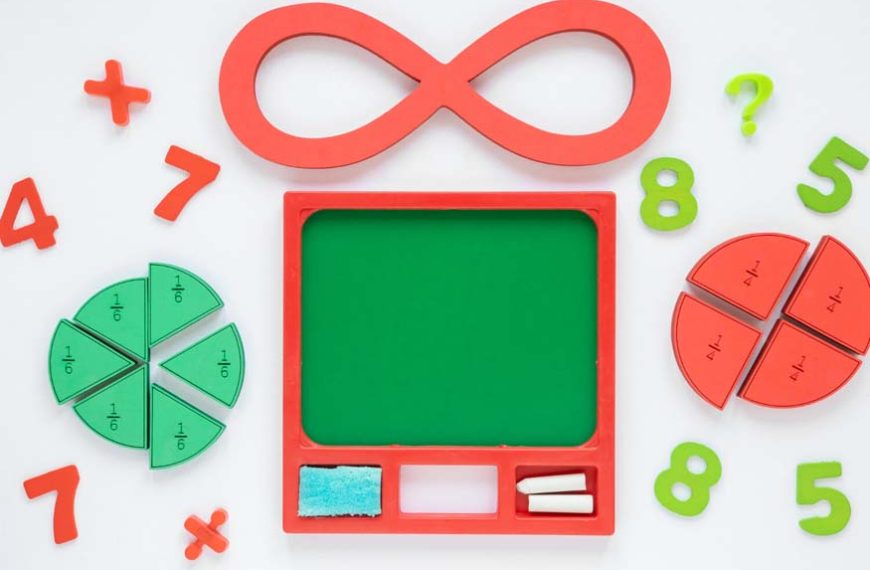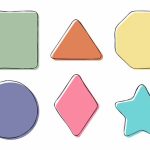Patterns are ubiquitous in the world around us, and they play an exceptionally vital role in our understanding of mathematics. For preschoolers, recognizing and comprehending patterns is an indispensable initial step in their fascinating journey through the realm of mathematics. We will thoroughly explore what patterns signify in the domain of mathematics, delve into the myriad types of patterns, generously provide examples to elucidate their concepts and elaborate on the profound significance of pattern recognition for preschool-aged children.
Unpacking the Essence of What is Patterns in Mathematics
Before we embark on an expedition into the rich tapestry of why patterns hold such immense value for preschoolers, let us first embark upon a journey of understanding the very essence of patterns in the realm of mathematics. Different patterns in maths are characterized as a sequence or arrangement of numbers, shapes, colours, or objects that meticulously adhere to a particular rule or repeat in a predictable, structured manner. Patterns, fascinatingly enough, can be discerned in abundance around us, ranging from the distinctive stripes adorning a zebra’s coat to the meticulously arranged leaves on the branches of a tree. In the multifaceted world of mathematics, patterns are akin to guiding stars, helping us traverse the vast sea of numerical complexities and unravel perplexing problems with precision.
Different Types of Patterns in Math
- Number Patterns:
- Shape Patterns:
- Color Patterns:
- Object Patterns:
Number patterns involve a sequence of numbers that follow a specific rule. For example, counting by twos (2, 4, 6, 8, …) is a number pattern. Preschoolers can start recognizing number patterns when they learn to count and identify numbers.
Shape patterns involve a sequence of shapes that repeat in a specific way. For instance, a triangle-square-circle-triangle-square-circle is a shape pattern. These patterns help preschoolers understand shapes and their properties.
Color patterns involve a sequence of colours that repeat. An example could be a pattern of red-blue-yellow-red-blue-yellow. Recognizing colour patterns enhances a child’s ability to identify and differentiate colours.
Object patterns involve a sequence of objects that follow a rule. For example, a pattern of teddy bear-car-train-teddy bear-car-train is an object pattern. These patterns help children develop their observation skills.
Illustrative Examples of Different Types of Patterns in Math
Let us now delve into a realm of illustrative example of pattern in math that shall illuminate the essence of patterns and render these concepts more tangible:
- Number Pattern Example:
- Shape Pattern Example:
- Color Pattern Example:
- Object Pattern Example:
Consider the mesmerizing number pattern: 5, 10, 15, 20, 25, and so on. In this elegant sequence, each number is meticulously derived by adding 5 to the preceding one. This captivating pattern is instrumental in acquainting preschoolers with the rudiments of addition and the concept of counting in increments of fives.
Imagine a delightful progression of shapes, commencing with a triangle, followed by a square, followed once more by a triangle, and so forth. This captivating arrangement forms a splendid example of a shape pattern. It aids preschoolers in recognizing and classifying shapes with precision and poise.
Envisage a captivating colour pattern that unfolds in a harmonious sequence: red, blue, red, blue, red, blue. In this rhythmic progression, preschoolers can effortlessly identify the repetition of colours, thus enhancing their proficiency in colour recognition.
Visualize a sequence of objects commencing with a teddy bear, followed by a car, followed once more by a train. This intriguing arrangement constitutes a quintessential example of an object pattern. Such patterns are invaluable in nurturing a child’s capacity to observe and anticipate the sequence of objects in their environment.
A Panoramic Exploration of Diverse Patterns in Mathematics
- Growing Patterns:
- Repeating Patterns:
- Symmetrical Patterns:
These patterns involve numbers or objects that increase or decrease by a consistent amount. An example is 1, 2, 4, 8, and 16, where each number is double the previous one.
Repeating patterns involve elements that occur in a regular cycle. For instance, the pattern red-blue-green-red-blue-green is a repeating colour pattern.
Symmetrical patterns are mirror images of themselves. A butterfly’s wings or a snowflake often display symmetrical patterns.
The Profound Significance of Recognizing Patterns for Preschoolers
Having traversed the enchanting landscape of examples of pattern in math, it is now imperative to contemplate the profound significance that lies within the recognition of patterns for preschool-aged children.
- Play with Blocks:
- Sorting Games:
- Nature Walks:
- Art Projects:
- Storytime:
- Counting Games:
- Pattern Recognition Apps:
Use coloured building blocks to create different colour and shape patterns. Ask your child to continue the pattern.
Sorting objects by colour, size, or shape helps children recognize patterns in attributes.
Point out natural patterns in the environment, such as the petals on a flower or the spots on a ladybug.
Create art projects where your child can use different colours and shapes to make their own patterns.
Read books that involve patterns in the storyline, such as “The Very Hungry Caterpillar” by Eric Carle, which features a pattern of food.
Practice counting with your child using number patterns, like counting by twos, fives, or tens.
There are many educational apps and games designed to help children recognize and extend patterns.
Ways to Foster Pattern Recognition in Preschoolers
As we traverse the intricate terrain of pattern recognition, it is essential to ponder upon the practical ways through which we can nourish this skill in the tender minds of preschoolers. Here are some engaging and interactive methods to encourage pattern recognition:
- Play with Blocks:
- Sorting Games:
- Nature Walks:
- Art Projects:
- Storytime:
- Counting Games:
- Pattern Recognition Apps:
Use coloured building blocks to create different colour and shape patterns. Ask your child to continue the pattern.
Sorting objects by colour, size, or shape helps children recognize patterns in attributes.
Point out natural patterns in the environment, such as the petals on a flower or the spots on a ladybug.
Create art projects where your child can use different colours and shapes to make their own patterns.
Read books that involve patterns in the storyline, such as “The Very Hungry Caterpillar” by Eric Carle, which features a pattern of food.
Practice counting with your child using number patterns, like counting by twos, fives, or tens.
There are many educational apps and games designed to help children recognize and extend patterns.
Recognizing different patterns in maths is an indomitable skill that unfailingly furnishes preschoolers with a robust foundation for future academic and intellectual pursuits. In addition to acting as a catalyst for cognitive growth, it initiates young minds into the fascinating world of mathematical preparation and serves as a forge where problem-solving abilities are perfected.
The early childhood education pioneer EuroKids emphasizes the critical function of pattern identification in preschoolers’ development. Our innovative and child-centered approach revolves around the understanding that patterns are fundamental to grasping mathematical concepts. We have meticulously structured our curriculum to seamlessly integrate various types of patterns, encompassing numbers, shapes, and colours, into engaging learning activities. We want to build a strong educational foundation for children’s future success by igniting their curiosity and instilling in them a profound appreciation for patterns from an early age.















